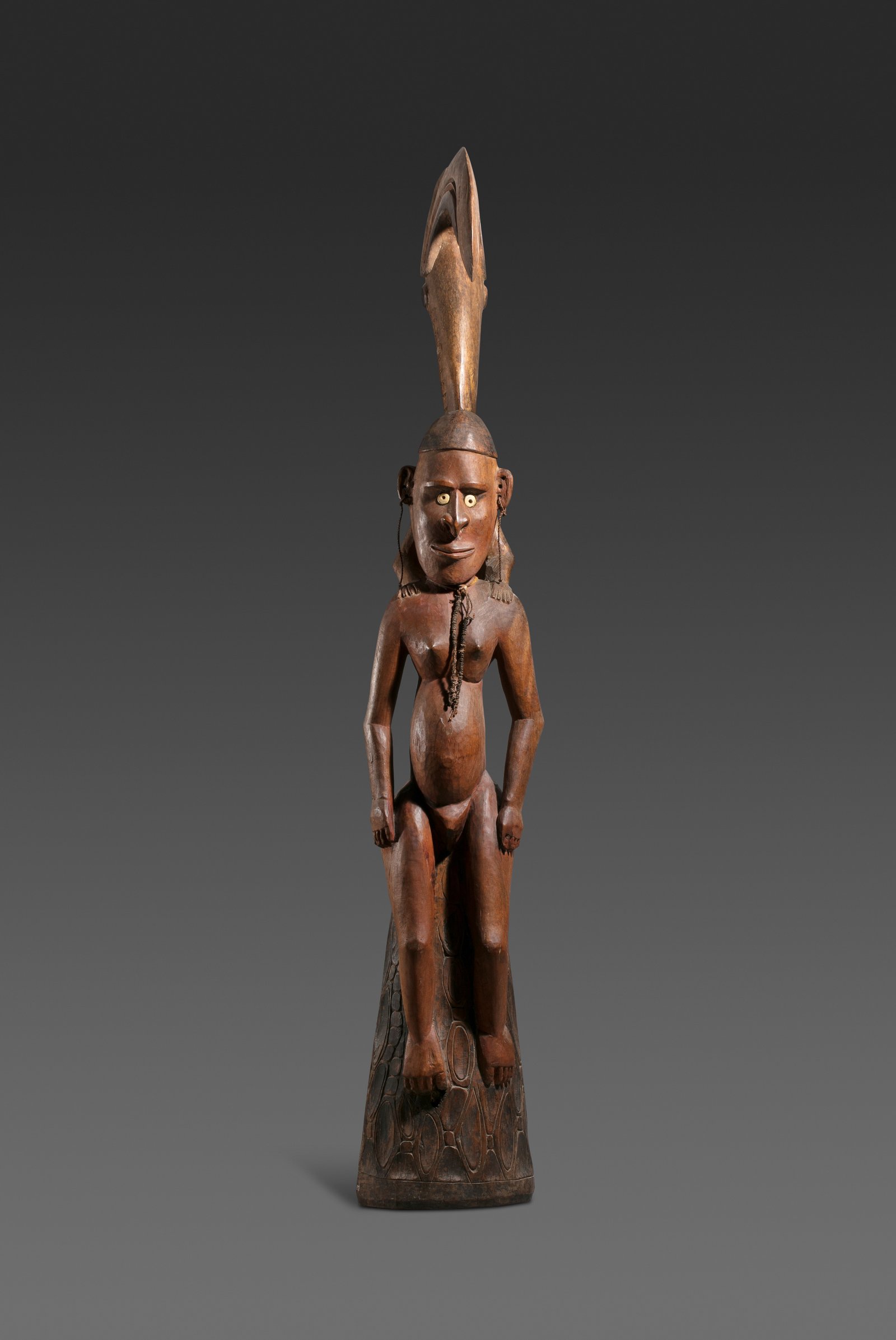The finial figure from the Eudald Serra collection
Wood, shells, fibers, pigments
Collection number: 5208 on base of sculpture
Estimated date of manufacture: first half of the 20th century
Village of Aibom
Iatmul language group
Lake Chambri region
Papua New Guinea
Provenance:
Collected in the village of Aibom (probably by Father Xavier Vergés)
Acquired from the Marienberg mission in 1966 by Eudald Serra
Eudald Serra Collection, Barcelona
By descent, kept in the family
David & Mercedes Serra Collection, Barcelona
Published by
Eudald Serra, Alberto Folch, Maria-Lluïsa Borràs. Arte de Papúa y Nueva Guinea.
Ediciones Polígrafa, S.A. Barcelona. 1984, reproduced (details) on pages 145, 147.
The architecture of the men’s houses was conceived as a metaphor for the body of a primordial ancestor, a male ancestor in the Lower Sepik and a female ancestor in the Middle Sepik. The façade represented his face, and the whole building his body.
Ngeko ceremonial houses in the Middle Sepik region of the Iatmul, also known as haus tambaran in Tok Pisin, are the most sophisticated. Their large facades ended in a spur crowned by a finial at each end of the roof. This sculpture, set between 15 and 20 meters high, was visible from the ground.
Our sculpture represents the Ngawi fish eagle. This bird of prey was a powerful symbol for headhunting, as the eagle is an excellent hunter that swoops down on its prey. Gregory Bateson1 reports that these birds symbolized the aggressive strength of the village. The eagle was synonymous with the headhunting prowess of the Iatmul community. The animal is depicted with an oversized beak and neck. It seizes a woman in its talons at shoulder level.
The female figure is shown seated on a decorated spur in the shape of a hollowed-out cone, allowing the sculpture to be fixed by pressing it onto another piece of wood. The face is smiling, with rimmed shell eyes pierced to form the pupil. The ears are pierced for fiber ornaments. The neck is adorned with a collar. The arms are detached from the body, the hands resting on the thighs. A slightly rounded belly suggests a pregnant woman. This representation was most often considered as the procreative mother of eagles.
The remarkable condition of our finial figure suggests that it was stored, probably after its functional life, in the upper chamber of the ceremonial house. Like a similar finial described by Crispin Howarth2 and preserved in Melbourne’s Museum Victoria (Inv. X32299).


